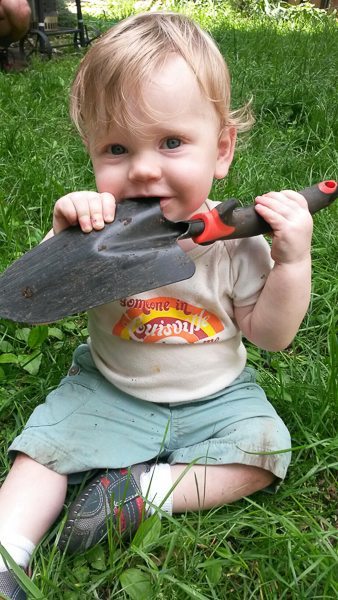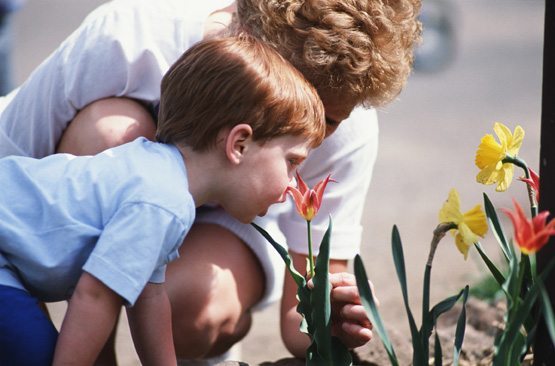Gardens for Play
Mary Kirk Menefee, Merrifield Landscape Designer
Even before I became a mom, I was fascinated by how children play and their special connection with the outdoors. Maybe it goes back to my own childhood of romping in the woods, where slate ledges covered in moss were grand staircases and the creek was the exploration route of daring explorers. Maybe it has to do with how I found a grown-up way to never stop playing outside. Whatever the reason, now that I have a little one to guide through the world, his experience playing outdoors is top of mind.
Need for Outdoor Play Spaces
Like many parents, I am struck by how much has changed since my own childhood. Study after study pops up on my Twitter feed regarding the damage that an overly organized, scheduled and indoor childhood can do. It turns out that outdoor free play is one of the essential ingredients for happy, healthy children. And, since imagining and creating outdoor spaces is what I do, I decided to dig into what makes the best outdoor space for kids given the ways we live today.

The best places to play respond to how children think and view the world at every stage of their development. For instance:
- Toddlers use all of their senses to explore and learn about the world.
- Toddlers don’t draw lines between play, work and learning.
- Young children love to take control of and manipulate their environment.
- Young children apply imagination to even the most mundane places and objects.
- Older children begin to see the outdoors as a place to be social.
Suggested Elements
Unfortunately, most traditional play equipment doesn’t take these ideas into account. It is generally static with a prescribed purpose and distinctly separate from the surrounding environment. Once a child has mastered its challenges, it becomes boring. On the other hand, open-ended places that are connected to their surroundings require imagination and can be reinvented each day for renewed fun. These open-ended places have a few key ingredients:
- Natural materials—boulders, logs, plants, etc., provide a strong connection to nature and blend a place into the surroundings.
- Sand or mud—kids needs a place for digging, construction, etc.
- Access to running water—kids are fascinated by water for its own sake and for mixing with the above sand and mud.
- Things to climb and balance on—it doesn’t take much for a small child to double their height and completely change what they see, so boulders, hills and logs are all fun.
- Places to hide—kids love cozy places, especially when they feel like they are out of adult’s view.
- Things to move—loose parts and props are the linchpin of creative play.
- Things for sound—wind chimes, drums, etc., bring a musical element to a space.
- Wildlife—even very young children delight in seeing birds, bugs and other animals.
- Plants—no garden is complete without them. For children, those that can be touched, smelled and even tasted are best.
When thinking about how to blend all of these elements to construct such a place, it is helpful to remember two tried and true adages: less is more and beauty is in the eye of the beholder. In other words, the best spaces don’t always look like much. A sand pit, a pile of rocks, a messy herb garden—all of these can be magical to a child. But, as a designer and a homeowner, I would probably not be satisfied to look out my window at a pile of sand and rocks no matter how beloved it is—perhaps there is a way to meet in the middle.


